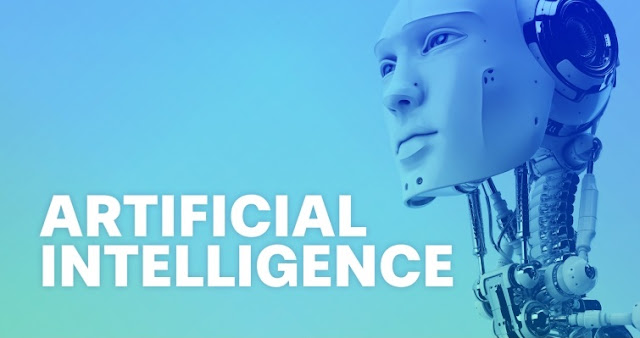What you need to know about Artificial intelligence or A.I
AI or artificial intelligence is the
simulation of human intelligence processes by machines, especially computer
systems. These processes include learning (the acquisition of information and
rules for using the information), reasoning (using the rules to reach
approximate or definite conclusions), and self-correction. Particular
applications of AI include expert systems, speech recognition and machine
vision.
AI was founded by John McCarthy, an
American computer scientist, in 1956 at The Dartmouth Conference where the
discipline was born. Today, it is an umbrella term that encompasses everything
from robotic process automation to actual robotics. It has gained prominence
recently due, in part, to big data, or the increase in speed, size
and variety of data businesses are now collecting. AI can perform tasks such as
identifying patterns in the data more efficiently than humans, enabling
businesses to gain more insight out of their data.
Types of
artificial intelligence
AI can be categorized in any number of ways, but here are
two examples.
The first classifies AI systems as either weak AI or
strong AI. Weak AI, also known as
narrow AI, is an AI system that is designed and trained for a particular task.
Virtual personal assistants, such as Apple's Siri, are a form of weak AI.
Strong AI, also known as
artificial general intelligence, is an AI system with generalized human
cognitive abilities so that when presented with an unfamiliar task, it has
enough intelligence to find a solution. The Turing Test, developed by
mathematician Alan Turing in 1950, is a method used to determine if a computer
can actually think like a human, although the method is controversial.
The second example is from Arend Hintze, an assistant
professor of integrative biology and computer science and engineering at
Michigan State University. He categorizes AI into four types, from the kind of
AI systems that exist today to sentient systems, which do not yet exist. His
categories are as follows:
·
Type 1: Reactive machines. An example
is Deep Blue, the IBM chess program that beat Garry
Kasparov in the 1990s. Deep Blue can identify pieces on the chess board and
make predictions, but it has no memory and cannot use past experiences to
inform future ones. It analyzes possible moves -- its own and its opponent --
and chooses the most strategic move. Deep Blue and Google's AlphaGO were
designed for narrow purposes and cannot easily be applied to another situation.
·
Type 2: Limited memory. These AI
systems can use past experiences to inform future decisions. Some of the
decision-making functions in autonomous vehicles have been designed this way.
Observations used to inform actions happening in the not-so-distant future,
such as a car that has changed lanes. These observations are not stored
permanently.
·
Type 3: Theory of mind. This is
a psychology term. It refers to the understanding that others have their own
beliefs, desires and intentions that impact the decisions they make. This kind
of AI does not yet exist.
·
Type 4: Self-awareness. In
this category, AI systems have a sense of self, have consciousness. Machines
with self-awareness understand their current state and can use the information
to infer what others are feeling. This type of AI does not yet exist.
Examples of AI
technology
AI applications
x
AI applications
x
Automation is the process of making
a system or process function automatically. Robotic process automation, for example, can
be programmed to perform high-volume, repeatable tasks normally performed by
humans. RPA is different from IT automation in that it can adapt to changing
circumstances.
·
Machine learning is the science of
getting a computer to act without programming. Deep learning is a subset of machine
learning that, in very simple terms, can be thought of as the automation of
predictive analytics. There are three types of machine learning algorithms: supervised learning, in which data sets are
labeled so that patterns can be detected and used to label new data sets; unsupervised learning, in which data sets
aren't labeled and are sorted according to similarities or differences; and
reinforcement learning, in which data sets aren't labeled but, after performing
an action or several actions, the AI system is given feedback.
·
Machine vision is
the science of making computers see. Machine vision captures and analyzes
visual information using a camera, analog-to-digital conversion and digital
signal processing. It is often compared to human eyesight, but machine vision
isn't bound by biology and can be programmed to see through walls, for example.
It is used in a range of applications from signature identification to medical
image analysis. Computer vision, which is focused on machine-based image
processing, is often conflated with machine vision.
·
Natural language processing (NLP) is the
processing of human -- and not computer -- language by a computer program. One
of the older and best known examples of NLP is spam detection, which looks at
the subject line and the text of an email and decides if it's junk. Current
approaches to NLP are based on machine learning. NLP tasks include text
translation, sentiment analysis and speech recognition.
·
Pattern recognition is a branch of
machine learning that focuses on identifying patterns in data. The term, today,
is dated.
·
Robotics is
a field of engineering focused on the design and manufacturing of robots.
Robots are often used to perform tasks that are difficult for humans to perform
or perform consistently. They are used in assembly lines for car production or
by NASA to move large objects in space. More recently, researchers are using machine
learning to build robots that can interact in social settings.
·
AI in healthcare. The biggest
bets are on improving patient outcomes and reducing costs. Companies are
applying machine learning to make better and faster diagnoses than humans. One
of the best known healthcare technologies is IBM Watson. It understands natural language
and is capable of responding to questions asked of it. The system mines patient
data and other available data sources to form a hypothesis, which it then
presents with a confidence scoring schema. Other AI applications include chatbots,
a computer program used online to answer questions and assist customers, to
help schedule follow-up appointments or aiding patients through the billing
process, and virtual health assistants that provide basic medical feedback.
·
AI in business. Robotic
process automation is being applied to highly repetitive tasks normally
performed by humans. Machine learning algorithms are being integrated into
analytics and CRM platforms to uncover information on how to better serve
customers. Chatbots have been incorporated into websites to provide immediate
service to customers. Automation of job positions has also become a talking
point among academics and IT consultancies such as Gartner and Forrester.
·
AI in education. AI can
automate grading, giving educators more time. AI can assess students and adapt
to their needs, helping them work at their own pace. AI tutors can provide
additional support to students, ensuring they stay on track. AI could change
where and how students learn, perhaps even replacing some teachers.
·
AI in finance. AI applied
to personal finance applications, such as Mint or Turbo Tax, is upending
financial institutions. Applications such as these could collect personal data
and provide financial advice. Other programs, IBM Watson being one, have been
applied to the process of buying a home. Today, software performs
much of the trading on Wall Street.
·
AI in law. The
discovery process, sifting through of documents, in law is often overwhelming
for humans. Automating this process is a better use of time and a more
efficient process. Startups are also building question-and-answer computer
assistants that can sift programmed-to-answer questions by examining the
taxonomy and ontology associated with a database.
·
AI in manufacturing. This is an
area that has been at the forefront of incorporating robots into the workflow.
Industrial robots used to perform single tasks and were separated from human
workers, but as the technology advanced that changed.





Comments
Post a Comment